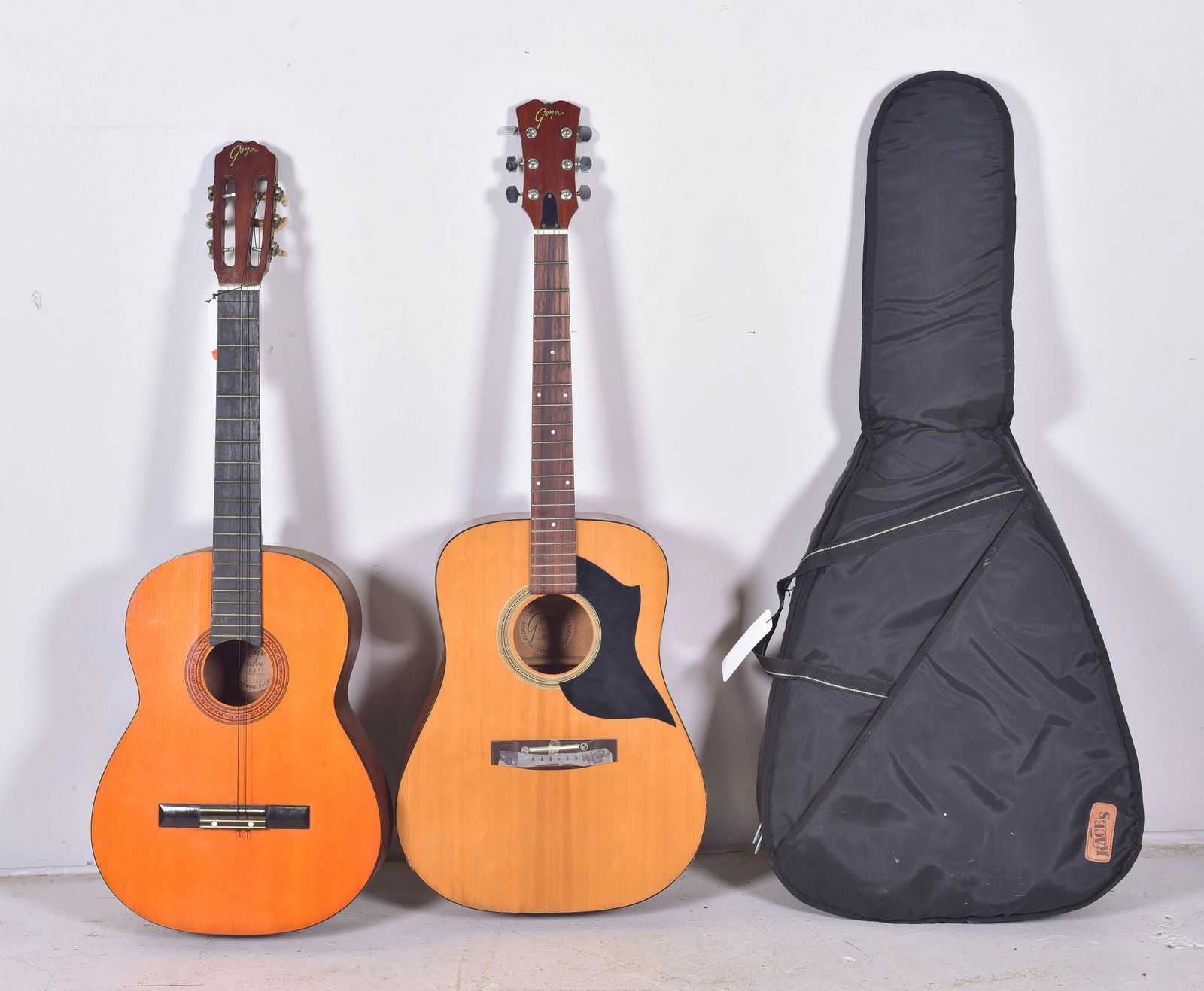
Probably made by Guild (also owned by Avnet) but no one seems to know for sure. G-50 Hand made in USA after Avnet bought Goya. The quality level is about that of the G-30. It seems they could never decide on the size as it came three ways: Concert, Grand Concert or Spanish depending on the year. G-45 The last version of the G-40 "redesigned in the Spanish style" - essentially, the re-introduction of the first G-40.į-7 Goya's standard flamenco guitar, very thin solid flamed maple with rosewood binding (some had top binding only). G-40 Brazilian rosewood B/S, ebony board and bridge, early ones were Spanish styled, later ones are Grand Concert sized. G-30 fancy flamed maple, not stained, ebony board, rosewood bindings and bridge, gold plated individual tuners w/ bone rollers, Grand Concert size G-25 solid flame maple, stained "warm reddish-yellow" rosewood bindings & fretboard, nickelplated tuners w/ bone rollers, discontinued early 1957 Grand Concert size G-20 solid flame maple, stained "grey-brown" white bindings r'wood board Grand Concert size G-17 "pure" (solid) mahogany Grand Concert (000 size sort of - anyway, larger than the Concert) rosewood board G-15 "pure" (solid) mahogany, Concert size discontinued in 1959 superceded by the G-17 and G-13. Some years there was a matte finished G-13M.

G-13 3-ply mahogany Concert size, 3/8" tuner posts, aka the Sound of Music model - it's the model Julie Andrews and Christopher Plummer played (or faked playing). G-10 3-ply flamed birch stained brown Concert (00) size, 1/4" tuner posts The common Herschmann/Avnet Goya Classical guitars: "Pure mahogany" in a Goya catalog meant solid mahogany instead of laminated. The 3-ply backs were bookmatched fancy veneers over a solid core - when in doubt, pull the end pin and you will see the solid core and veneers. Here goes:Īll Levin (made in Sweden) made Goyas had solid alpine spruce tops ("alpspruce" in the catalog) ivory nuts and saddles. The only differences between yours and my G-30 is that mine has fancier looking maple, individual tuners and an ebony fretboard. The G-20 was the middle of the line and made of all solid woods, stained flame maple in your case with an alpine spruce top. If the other Goyas are like this one (this is pretty low end in their line I think), this maker is definitely something to consider. Its not as mellow as my Hill Almeria, but its still plenty mellow when compared to a steel string) and its definitely more interesting than any mahogany b/s nylon stringed guitar that I've played.Īnyway, I just wanted to pass along this info to people looking for a vintage nylon stringed guitar.

It has solid maple back and sides, so that must have something to do with it. Its got a snap to it that many traditional classical guitars lack. But what makes this guitar special is that it sounds great with a pick and for "folk" type music. Not a classical in the "classic" sense, it sounds great for the type of stuff for which I use nylon stringed guitars- bossa nova, lounge etc. I was intrigued by what Mike Halloran wrote about Goya classicals. I've been messing around with nylon stringed instruments for a little while now and I ran across this guitar.

Having said this, there are a lot worse guitars out there, and as well as being historically important, the 1820 bass can certainly provide the goods when required.I'm so taken by the guitar, I want everybody to know about it! Over the course of the 70s, the Japanese output improved dramatically, and in many ways these early 70s models are a low point for the brand. These new Epiphones were based on existing Matsumoku guitars, sharing body shapes, and hardware, but the Epiphone line was somewhat upgraded, with inlaid logos and a 2x2 peghead configuration. The Matsumoku factory had been producing guitars for export for some time, but the 1820 bass (alongside a number of guitar models and the 5120 electric acoustic bass) were the first Epiphone models to be made there. By the end of the 1960s, a decision had been made to move Epiphone guitar production from the USA (at the Kalamazoo plant where Gibson guitars were made), to Matsumoto in Japan, creating a line of guitars and basses significantly less expensive than the USA-built models (actually less than half the price).


 0 kommentar(er)
0 kommentar(er)
